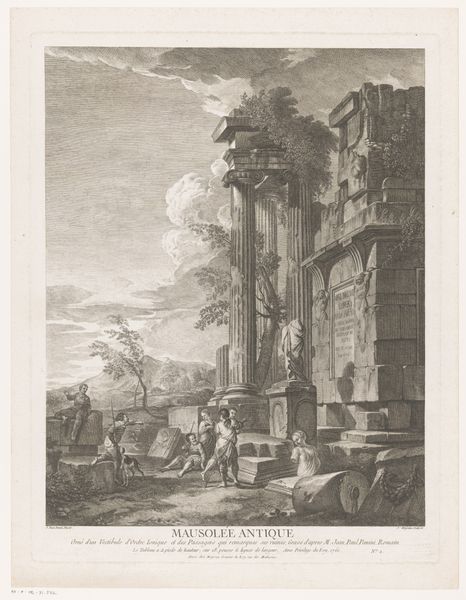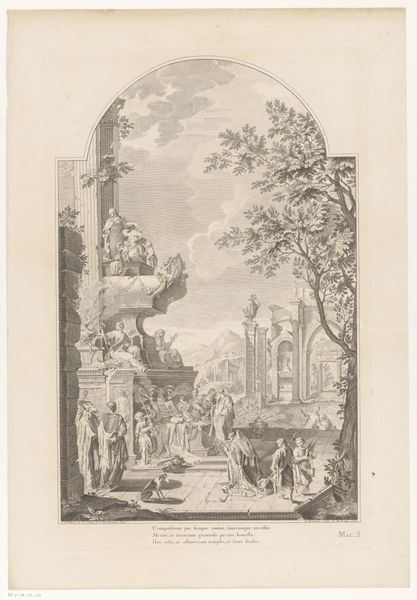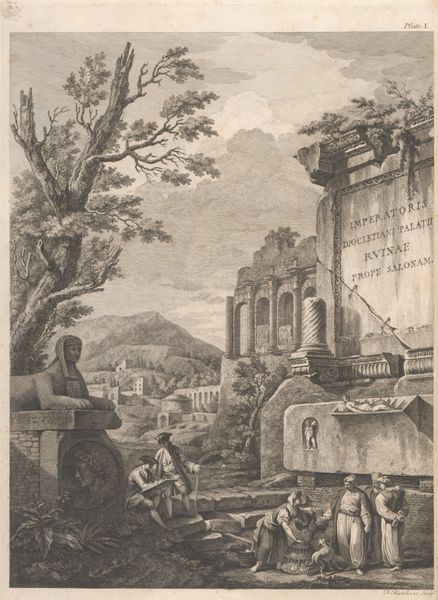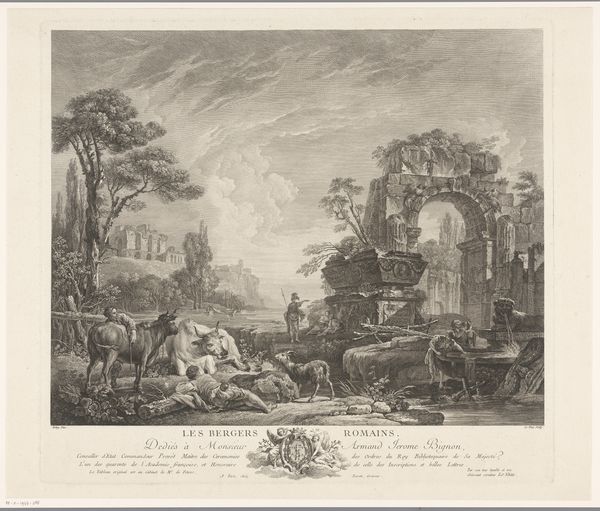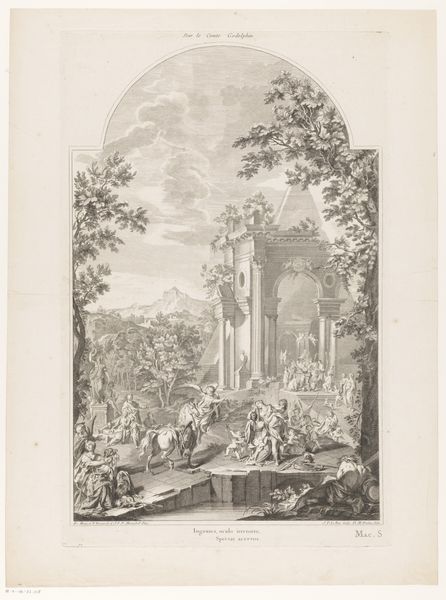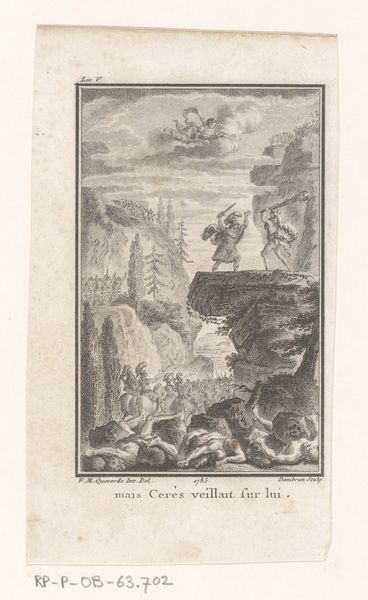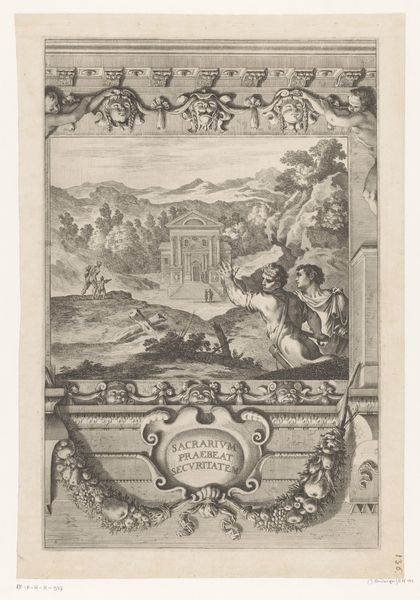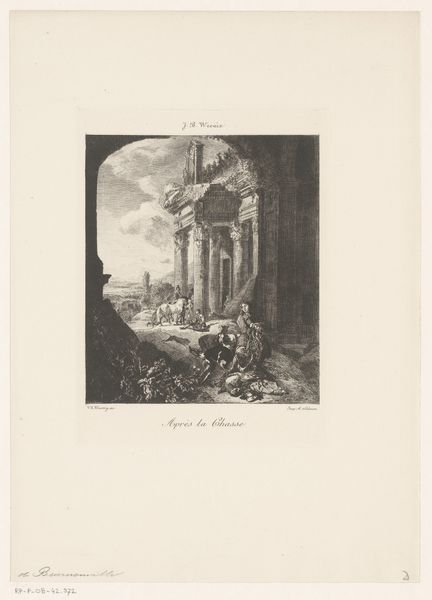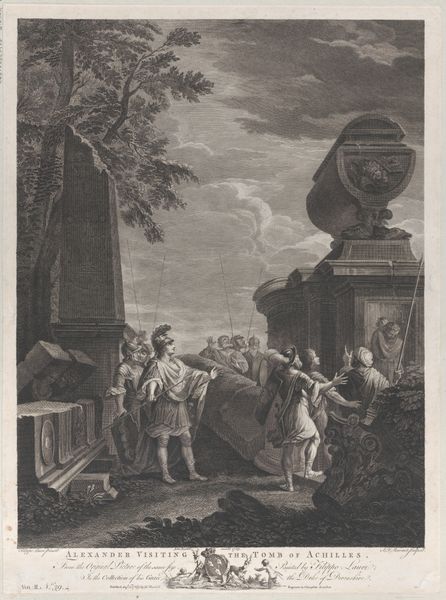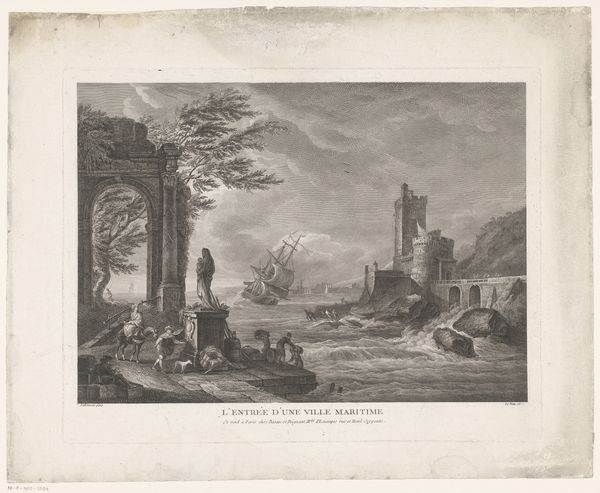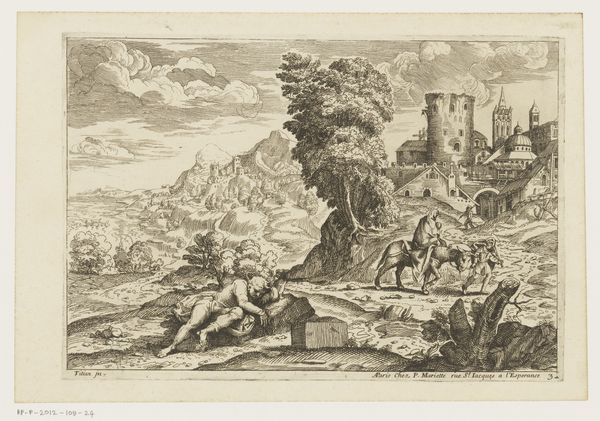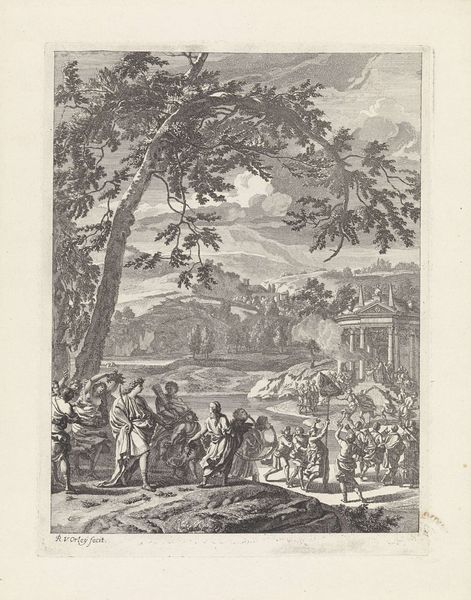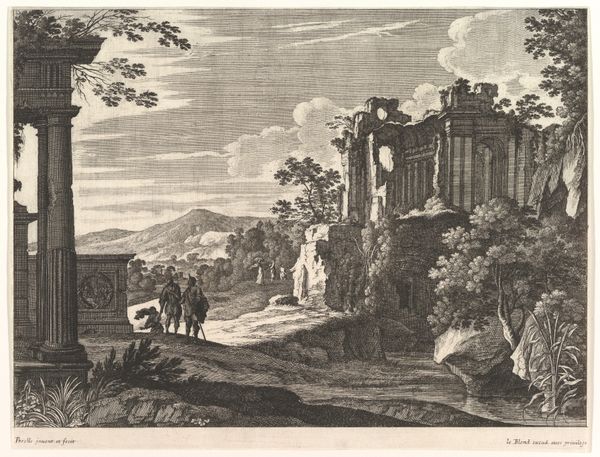
print, engraving, architecture
#
baroque
# print
#
old engraving style
#
landscape
#
classical-realism
#
history-painting
#
engraving
#
architecture
Dimensions: height 481 mm, width 370 mm
Copyright: Rijks Museum: Open Domain
Jean Moyreau's etching presents a "View of a Ruin with Six Figures," an aqueduct, a symbol of Roman engineering prowess, now crumbling, nature reclaiming it. This scene evokes a sense of the transience of human achievement. The ruin itself is a potent symbol, echoing the theme of "vanitas" familiar in Dutch art. In contrast to the crumbling architecture, we also see what appears to be a Sibyl, and a bas-relief of a Romanesque scene, indicating an attempt to understand the past, or at least an acknowledgement of it. Such ruins, these fragments of a once-grand structure, have haunted the artistic imagination across centuries. From Piranesi's dramatic depictions of Rome to contemporary artists exploring urban decay, the ruin becomes a symbol of time's relentless march, carrying a psychological weight of lost grandeur and inevitable decline. This ruin isn't just stone, it’s a stage upon which we project our fears and hopes about the passage of time, its cyclical nature.
Comments
No comments
Be the first to comment and join the conversation on the ultimate creative platform.
